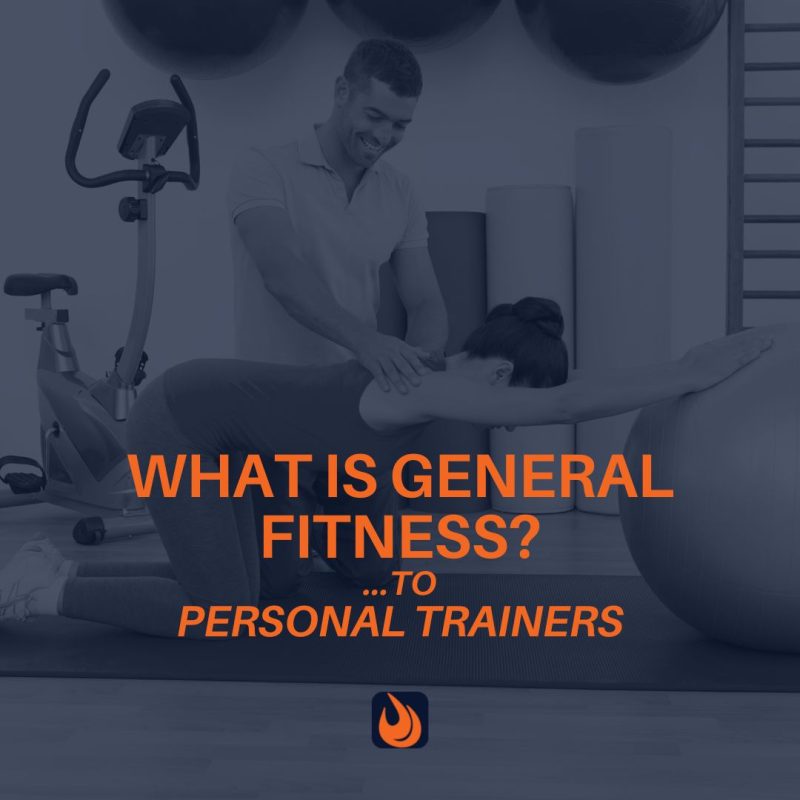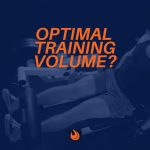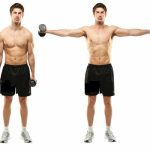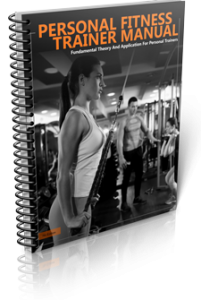
What exactly is general fitness? For anyone considering a career in personal training, having a firm grasp on the very definition of that which clients will pay you to achieve is absolutely imperative. Let’s dive deep into what we consider general fitness to be.
What is General Fitness?
According to the President’s Council On Physical Fitness, being physically fit means “having the energy and strength to perform daily activities vigorously and alertly, with energy left over to enjoy leisure activities or meet emergency demands.” Your heart, lungs, and muscles should be healthy and strong. Your weight and body fat should be within optimal ranges.
To determine a level of physical fitness, the NFPT breaks it down into five measurable parts:
- Cardiorespiratory Conditioning
- Muscular Endurance
- Muscular Strength
- Flexibility
- Body Composition
Let’s explore each.
Cardiorespiratory Endurance
Cardiorespiratory endurance is the ability of your heart and lungs to supply muscles with nutrients and oxygen. Aerobic exercise like biking, jogging, and swimming can be measured for speed, duration, and distance.
Building endurance promotes higher energy levels. Aerobic exercise also burns calories and adipose tissue to keep your weight under control. A fit cardiorespiratory system lowers your risk of death from heart attacks, strokes, and pulmonary disease.
According to the American College of Sports Medicine, ACSM, the following principles should be applied when developing an exercise prescription to enhance cardiorespiratory fitness:
1. Type of Activity: The activity must use large muscle groups and must be maintained for a period of time.
2. Intensity: The average conditioning intensity for healthy adults is from 60-70% of their functional capacity, referred to as maximum heart rate. Monitoring a target heart rate training zone during exercise is a good way to measure intensity
3. Duration: The duration of the exercise will depend on the intensity of the exercise. Usually, activities of lower intensity, such as walking, can last longer than a high-intensity exercise like running. Aerobic fitness can also be accomplished by alternating high and low-level activities as in walking between brief periods of jogging. The ACSM recommends 15-60 minutes of continuous or discontinuous aerobic activity.
4. Conditioning Frequency: The aerobic activity must be performed from 3 to 5 days a week.
5. Rate of Progression: In the first 6-8 weeks of exercise, significant conditioning effects will occur. The fitness professional will have to adjust the intensity and duration of the activity if progress is to continue.
Progression of Cardiorespiratory Conditioning
The NFPT asserts that there are three stages of progression in the aerobic or endurance phase of the exercise prescription:
1. The Initial Conditioning Stage: During the first 4 to 6 weeks of beginning aerobic activity for the first time, 10-15 minute increments of low-intensity activity at 60-70% of maximum heart rate, are recommended for the average healthy individual. You should also include some stretching and light calisthenics, such as abdominal work.
2. The Improvement Conditioning Stage: Initially, there is a slight increase in exercise intensity. Thereafter, duration of the activity is increased every 2 to 3 weeks. The ACSM warns that older individuals may take longer to adapt to increases in conditioning.
3. The Maintenance Conditioning Stage: Usually after 6 months of aerobic training, the average individual has achieved their goal of general fitness and wants to maintain this level. The ACSM states that aerobic conditioning can be accomplished in as few as three 30-minute workouts a week, training at 60-70% of your maximum heart rate.
Muscular Endurance
Muscular Endurance as the ability of your muscles to perform contractions for long periods of time and a basic measure of general fitness. The number of curl-ups one can perform is a measure of abdominal endurance; likewise, someone who has advanced from a 5-second modified plank in good form to a 60-second plank has increased muscular endurance.
Improving Muscular Endurance
To increase the endurance of a particular muscle group, the personal trainer should prescribe high-repetition resistance exercises in the 20-25 rep range. The muscular endurance phase of a general exercise program should include a circuit routine consisting of multiple compound exercises targeting different muscle groups. The goal is to affect as much total muscle tissue as possible. To achieve this, perform 3 to 4 continuous circuits of one or more exercises in each category of the following movements:
-Pushing
-Pulling
-Squatting/Lunging
Muscular Strength
Strength as a measure of general fitness and is further categorized into:
1. Static Strength: How much weight you can hold in place.
2. Dynamic Strength: How much weight you can move.
Developing Strength
The more balanced strength one develops moving heavier loads, the lower the chance of injury in everyday life. Maintaining strength is more difficult with age and the increasing loss of lean weight. Strength can be increased through static contractions, as in isometric exercises or by low-repetition, high-intensity isotonic exercises. When the target muscle is worked 1-2 times a week (as is often the case with brand-new personal training clients), compound movements like squats, rows, and presses that target the major muscle groups are required.
For our general fitness clients, increased strength gains will occur in the 12-15 rep range.
For advanced applications, sets of an exercise in the 4-6 rep range will stimulate optimal strength gains. Perform strength training less frequently as intensity is increased. Strength gains are 30% greater when practicing eccentric (negative) training. Eccentric phases are able to produce greater force output than concentric phases and therefore, can move more weight. Since the resistance is greater, so is the amount of damage and resulting synthesized muscle tissue.
Flexibility
We define flexibility as the ability to move muscles and joints through their full range of motion. One way to measure flexibility is to see how close one can come to touching their toes with legs straight.
The flexibility of muscles and joints will help prevent injury and maintain mobility as your general fitness clients age. Of particular concern, is flexibility in the posterior thigh and lower back. Lack of flexibility here increases your risk of chronic lower back pain.
Static and dynamic stretching are ways to improve flexibility and mobility, the latter of which is the body’s ability to move the body through a range of motion actively. Static stretching involves holding a sustained stretch for 30 seconds or more, without pain (taking a stretch too far can cause a rebound effect where the muscle contracts to protect itself). Dynamic stretching describes actively moving a joint through its full range of motion.
It is important that static stretching is done slowly with gradual increases in the range of motion and only done before a movement if a muscle is deemed overactive and short. Static stretching has been found to reduce power output and would be inappropriate to apply to every muscle in the body pre-workout.
NFPT recommends an active and dynamic warm-up before cardio. When performing extended aerobic activity before resistance, training, Once finished with the cardio, the client should perform a dynamic warm-up routine that directly relates to the planned resistance exercises, such as unloaded squats before loaded squats.
However, static stretching should primarily be performed as the final phase of the general fitness exercise program.
Self-myofascial release techniques such as foam rolling can help prepare muscles for stretching by pumping blood into the tissue, moving metabolites out, and sending neuromuscular feedback to relax fascial restrictions.
Stretching exercises need to be performed at least three times a week to improve flexibility over time. It is safer to stretch muscles that are already warm. Stretching is best performed after an aerobic session or between sets of resistance exercise.
Body Composition
Body composition is the ratio of lean body mass to fat body mass. Body composition measurements are divided into two (2) parts: fat and non-fat.
Lean body tissue (the non-fat components)are bones, muscles, organs, and water mass. Though small amounts of essential fats exist in organs and bones, they are still deemed lean mass, or ‘non-fat’, components. Generally speaking, when dieting without exercise and/or excessive caloric restriction, weight loss occurs as a result of lean body tissue, mostly water, and not loss of fat. A balance of healthy eating and exercise is the way to both lose the fat weight and build the lean body weight.
It is important that your client know that ‘thinness’ does not equate to ‘leanness’. Being lean is to be within a healthy body fat range with adequate muscle to perform activity. Muscle is more dense, heavier per equal measure, than body fat (i.e. a spoonful of muscle weighs more than a spoonful of fat). Thus, the traditional scale can be very misleading as it does not have the ability to differentiate between lean (muscle) and non-lean (fat) tissue – going simply by body weight alone isn’t revealing.
Body Comp Assessments
As a personal trainer, you will conduct consistent body composition measurements to gauge progress. This is done with a scale that uses electrical impedance, calipers, or underwater weighing. Though these devices are different in function and should be used according to their specific instruction, they are similar in application and results. They calculate body fat based on total weight to determine lean body mass.
Initial body composition measurements should be conducted in the assessment phase of client programming, and retested every 1-2 months to gauge progress. For women, fat should not exceed 25% of their body weight. For men, fat should not exceed 18% of their body weight.
The development of speed, agility, and advanced coordination will also enhance overall physical performance contributing to greatly improved general fitness; these are endeavors for the client who has achieved a base level of fitness. It is also important to remember the principle of specificity: do the exercise relative to the area you wish to improve. If your client wishes to grow stronger, they will have to lift heavier weights, etc.
References
Physical Activity Guidelines for Americans, 2nd Edition. https://health.gov/our-work/nutrition-physical-activity/physical-activity-guidelines/current-guidelines
American College of Sports Medicine, Guidelines for Exercise Testing And Prescription, Third Edition, 1986, Lea & Febiger.
The NFPT Study and Reference Manual, Fundamentals for the Certified Personal Trainer, CPT; Seventh Edition (2017).







